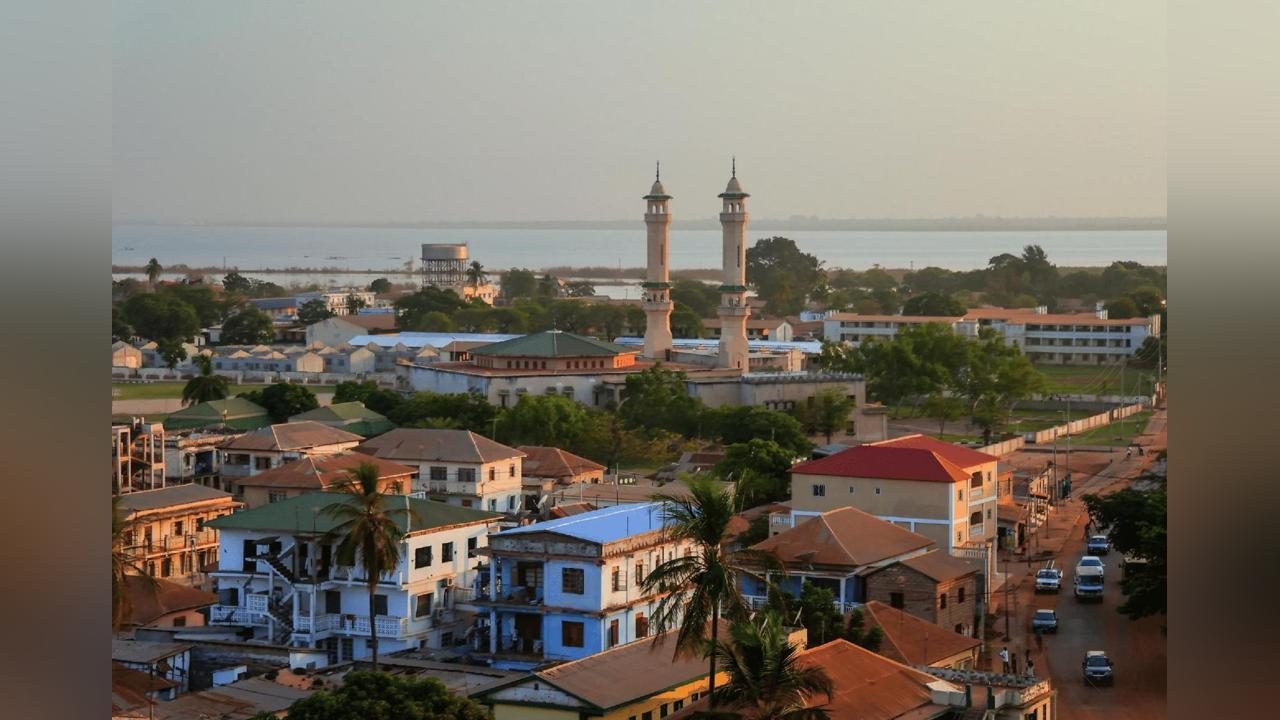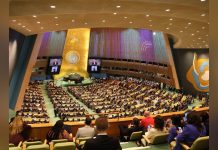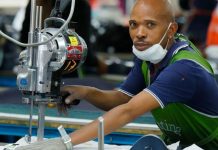By Nyang Njie
Africa-Press – Gambia. Banjul is a city with one thorough way (Denton Bridge) and it is boarded by the river with a majestic panoramic view of Barra also known as Wala deh facing north, Lamin, Mandinary and Bonto facing south. The city of Banjul is a blessed city and most soldiers of God (Sahou Oumar Futiu Taal, Mam Mawdo Malick, Sayerr Matty Bah, Maba Jahou, Mam Mass Kah) have left their imprint on the city. Most compounds in the city has alternate access points called (port) and this was done for a specific reason by the elders of the city. These ports act as social conduits to facilitate and resolve social issues of Banjul and also maintain the social safety net of the city. Sutura was the operative word in the dispensation of social duties of the inhabitants of the city.
The city prided itself with men and women of distinction in all spheres of life. The business pedigree of men like Alhagi Sulay Sarr, Penda Chorro, Alhagi Alieu Jeng, Allhagi Alieu Ceesay, Lie Samba Bokut Façon, The Carrols, Mahoneys, Fosters, Oldfields could have been the issue of a case study in a any Ivy league school. Fashionistas and Socialites like Njie artist, The hip and hot crew of (Everly Brothers) with men like (Tijan Foon, Ebrima Dondeh, Ass John, Alfred Cummins & Omar Njie) controlled the social scene. The city also churned world class administrators and intellectuals that handled the affairs of not only the city but the country. Mr Erik Christensen, Sir Hardy Faye, AA Faal, Mr Wadda, Pa Kamma Badjie, Uncle NSZ Njie were torch bearers and trail blazers of their time. Camden Vous, Kent street vous and other social clubs were breeding grounds for social reform and enlightenment in the city. A wollof adage “nopaa mak borom”is evident with my narrative. I was too young to remember but I have seen many seniors of the city reminisce about the good old days.
Banjul invokes memories of yester years that bring back nostalgic feelings because I feel like a stranger in the midst of strangers. Wish I can have the city I once knew as Banjul back. Racing my miniature boat along the canals and gutters of Banjul was a joy. A childhood that was so eventful and joyous. For starters, I consider myself a hybrid Banjulian because I was born across the bridge at Westfield Clinic and spent most of my time in Banjul as a child. My parents are thorough bred Banjulians and they made sure that my values and social orientation were deeply rooted on the Banjul way of life.
I still have vivid memories of many a good afternoon spent at the Box Bar Stadium watching legends such as Butut Joof and Biri display their talents. A stone’s throw from the Box Bar stadium was the Tennis lawn young basketball players like Moses Malone (Suchet), Cooper (pa boy) and others were dazzled by our nouveau Yankees otherwise called Gamericans with their newly imported Basketball moves. The likes of Ousman Sabally, Mam Essa Gaye, Remi Joiner and Bai Malleh Wadda were the centre of attraction on the hard floor. Banjul had enough past time and Pakin was one of the favourites. Kaka Rass could have given Usain Bolt a run for his money on any diamond league circuit. Ndo Secka and Sal Drammeh gave the pakins daring pursuits on the stretch of Fitzerald Street. The fanfare in the city during sporting events was not only colorful but memorable. Men like Alieu Sallah and Oye (the rattle man) added to the fanfare.
Every city has its under world and the dons of the city had their base at the coconut grove behind the market called “pool” The city mob converged at pool to showcase their exploits. Georgie was a permanent fixture alongside the midget Abou Sey at this rendezvous. From pool one heads to the government wharf for a stash of groundnuts. Then off to wharfo Njago where Albert the crab king was exploiting the riches of the river for his daily sustenance with a bicycle wheel and net. From whafi Njago it was time to steal sweet potato around the Sanatorium and veer off to Sekabi in jollof town.
The late night culinary experience in the city was somehow diverse. Bange lal had great omlette with Bai Dam on the stove. Kaba at Peel Street was another good spot or Sawyer at Primet. A town will never be lively without men like Yusipha Jaiteh, kebba Buya (schoolen) and lie bamba jagne (awoh KT). I hated going back home to Fajara cos Banjul was this playground that had all the ingredients for a big screen blast. We listened to stories of the seamen. JC J of old perseverance narrated his adventures out west in the United States.
Banjulians are nice and peace loving people. Generally they are upbeat, progressive and jolly. July 1981 the inhabitants of Banjul witnessed an unprecedented carnage of epic proportions. Legends were born and myths were casted in the psyche of people for years to come. Names such as Gaddy, Ibliss Jobe and Ndo secka became household names for their exploits during the foiled revolution. Anarchy and pandemonium was the order of the day during the hot summer month of July 1981. Fully armed rascals turned outlaws were gallivanting the city of Banjul tormenting innocent souls and living a life that was imitating art. Gaddy was brandishing a Kalashnikov in the streets and alley ways of Banjul being a don without a constituent. Ndo Secka on the other hand was enjoying the life of an outlaw albeit just for a week. He became the don of the northern sector of Banjul (soldier town) with impunity. Ibliss Jobe stationed himself in the city morgue along telegraph road and he was the tomb raider that robbed the dead of their material belongings. One of the undertakers at the morgue realized that a certain corpse was always on top when new casualties of July 81 rebellion were brought into the morgue.
Fast forward to 1986 when Gambia was at the tail end of its economic depression and the IMF prescribed ERP (Economic Recovery Programme) a group of young disgruntled men with entrenched social ties to the city decided to be a menace to society. A group called “Terror 18” was conceived by a brilliant yet troubled kid from Perseverance Street called Macumba Sanneh alias “Marcus Garvey”. Garvey as he was fondly called by his peers and comrades was disillusioned with the status quo and the easiest target for him was the sons of the political and economic class of society whom he believed resides across the bridge and predominantly in Fajara. He organised a Posey and prominent in the posey where Sulayman Gaye of perseverance, Lamin camara alias Ltigo, Batch Faye, Abu Gabarr alias colonel Ngum, Mbye Jammeh of Gloucester Street. Mbye is the son of a prominent butcher in town and he facilitated the provision machetes and knives for the assaults. This group tormented students at both Saints and GHS who were not inhabitants of the city. A rational and peace loving soul with an exceptional IQ by the name of Gabel Faal intervened on several occasions to stop the mellé that was to be unleashed by the terror 18 squad. Banjul my Banjul is dead and never to be resurrected because the people that made up Banjul have all deserted the city. It is a shame but we have lost our heritage as Banjulians. Time came and time passed and most of these men in this squadron are now productive members of society.
Summer months have always been interesting in the city by the sea. Football and the rite of passage for boys (Lèël) have always been high on the city’s calendar of events. The outpatient wing of the RVH hospital was always flooded with droves of young men getting circumcised. Circumcision in the city was normally conducted in numbers either by family or by neighbourhood. The Selbes and Mbortal Mbaar will trek to the outskirts of the city looking for good mangrove cane otherwise called lengeh for the evening entertainment called kassack. Musa Ngum and Mbye Gaye were permanent fixtures in the kassack scenes. Dr Henry William was also prominent in the circumcision of young men. After a month of isolation and cultural education, the “art” or Njulie were ready to be presented to society. Big ceremonies called Samba Soho were organized and the families and friends of the Njulies do gather for a colorful ceremony rich in ambiance and culture. Generally, a big burn fire is lit and people sing and chant into the night. Just before the crack of dawn, the Mbortal Mbarr leads a procession to call “maam”. This was normally done in the woods behind the library or at a place called “taati park”. Maam is an elusive enigma that is deeply rooted in our folklore and it invokes fear in the heart and minds of the young initiates. Musa Ngum never failed the crowd with his stellar performances. After the break of dawn, the new initiates are taken to the beach to wash off their childhood and enter the world of manhood.
Source: The Standard Newspaper | Gambia
For More News And Analysis About Gambia Follow Africa-Press






